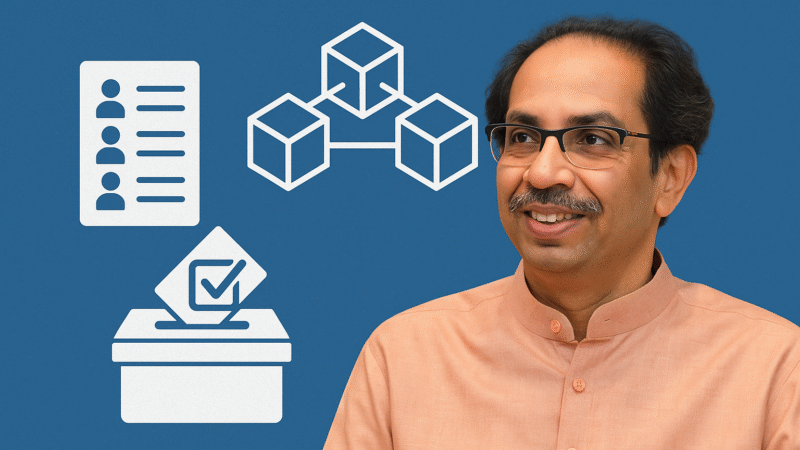Binance Blockchain Yatra 2025: Driving Blockchain Adoption Through Community, Education And Innovation
Introduction
In the rapidly evolving world of digital assets, education and accessibility remain critical to widespread blockchain adoption. In 2025, Binance—the world’s largest cryptocurrency exchange—launched one of its most ambitious grassroots initiatives to date the Binance Blockchain Yatra 2025. Spanning across India and Southeast Asia, this multi-country tour isn’t just about marketing or platform promotion; it’s a full-fledged movement to educate, empower, and activate communities in blockchain and Web3 technologies.
The Yatra—a Sanskrit word meaning “journey”—is aptly named. It’s not merely a corporate event; it represents a pilgrimage into a new digital era, where knowledge, decentralization, and inclusive finance are key themes. Through workshops, developer grants, university collaborations, and strategic outreach, Binance is targeting regional transformation in how citizens, developers, and businesses engage with blockchain.
The Vision Behind The Yatra
The primary vision of Binance Blockchain Yatra 2025 is to demystify blockchain technology and establish it as a transformative tool for emerging economies. The program aims to bridge the knowledge gap by bringing blockchain education to cities, universities, and rural technology hubs across India, Indonesia, Vietnam, the Philippines, and Malaysia.
Binance’s Chief Executive Officer for Asia, Richard Teng, emphasized that the program is aligned with Binance’s long-term objective of global Web3 adoption through grassroots community building. “We believe India and Southeast Asia can lead the global blockchain revolution—not just as users, but as creators,” Teng stated in a press interview during the Hyderabad event.
A Multi-Layered Strategy For Blockchain Adoption
1. University Partnerships and Youth Education
At the heart of Binance’s Yatra is youth engagement. Over 50 universities in India and Southeast Asia have been included in the tour, with Binance hosting lectures, hackathons, and certification programs. The emphasis has been placed on Web3 development skills, smart contract programming, and blockchain use cases in sectors like healthcare, supply chain, and finance.
Binance Academy—the educational division of the exchange—has launched an extended “Blockchain Scholar” curriculum exclusively for university students attending the Yatra sessions. This curriculum, delivered both in person and online, allows students to earn credentials recognized across the global Web3 employment landscape.
2. Developer Bootcamps and Hackathons
Recognizing the massive tech talent pool across South Asia, Binance has invested heavily in developer-focused events. The Yatra features multi-day bootcamps in cities like Bengaluru, Mumbai, Manila, and Jakarta, teaching cutting-edge protocols, security frameworks, and real-time dApp development.
Additionally, Binance has partnered with regional blockchain accelerators to offer up to $250,000 in grants to promising projects emerging from the Yatra. This program not only nurtures innovation but also builds a local Web3 ecosystem independent of global dependencies.
3. Regional Language Education and Localization
One of the major roadblocks to blockchain adoption in Asia has been language and accessibility. Binance has strategically localized its educational content into Hindi, Tamil, Tagalog, Bahasa Indonesia, and Vietnamese, among others. Community ambassadors have been deployed in rural and tier-2 cities to facilitate hands-on learning and provide mentorship.
4. Promoting Financial Inclusion through Blockchain
India and Southeast Asia are home to over 1 billion unbanked or underbanked individuals. Binance is using the Yatra as a platform to highlight how blockchain-powered wallets, DeFi tools, and cross-border payments can provide inclusive financial services. Workshops feature real-world demonstrations of peer-to-peer lending, remittance services, and community cooperatives built on blockchain.
5. Partnering with Local Governments and Startups
Binance has engaged in dialogue with local regulatory authorities and startup incubators, ensuring that the Yatra aligns with national fintech strategies. In India, for example, Binance has worked with members of the MeitY Startup Hub to explore how blockchain can power land record management, food supply chains, and educational credentials verification.
In Vietnam and Indonesia, Binance is collaborating with local fintech hubs to integrate blockchain into digital identity solutions and SME finance platforms, creating a foundational infrastructure for long-term adoption.
Spotlight: Key Milestones From The Yatra
Hyderabad, India – Launch Event
The Yatra kicked off in Hyderabad, with a massive turnout of students, developers, entrepreneurs, and policy experts. Binance CEO Richard Teng introduced the initiative alongside Pushpendra Singh, a prominent Indian blockchain educator and Binance India community leader. The event included live coding sessions, NFT launches by local artists, and breakout panels on the future of India’s crypto economy.
Manila, Philippines – Developer Incubator Launch
In Manila, Binance launched a dedicated Web3 Developer Incubator, committing $2 million to Philippine-based blockchain startups. The initiative was announced in partnership with a local university consortium and has already onboarded over 100 developers for mentorship and early-stage funding.
Jakarta, Indonesia – Women in Blockchain Initiative
Recognizing the gender gap in tech, Binance used its Jakarta stop to spotlight the Women in Blockchain initiative. Panels featuring female founders, developers, and fintech leaders discussed how inclusivity can drive more innovative and empathetic blockchain solutions.
Ho Chi Minh City, Vietnam – Blockchain for SMEs
In Vietnam, the Yatra focused on Blockchain for Small and Medium Enterprises (SMEs), showcasing use cases around digital invoicing, international payment solutions, and inventory tracking. Binance also introduced low-code toolkits for SMEs to integrate blockchain without needing heavy technical know-how.
Community Response And Media Coverage
The response to the Yatra has been overwhelmingly positive. Local press in India, the Philippines, and Vietnam have praised the program for bringing high-tech education to underserved regions. Influencers and crypto analysts are calling it a “blueprint for blockchain outreach in emerging markets.”
Community members have particularly appreciated the open and interactive format of the sessions. “It’s not just about Binance; it’s about us,” said a participant at the Bengaluru session. “They’ve come to teach, yes—but they’re also listening to how we can build solutions that work for our realities.”
Addressing Regulatory Uncertainty
The blockchain space in South Asia has seen fluctuating regulatory policies. Binance has addressed this by maintaining clear legal dialogue and operating within the frameworks of each country. The exchange has advocated for progressive regulation that supports innovation without compromising consumer protection.
In India, Binance has submitted proposals outlining how blockchain sandboxes can help policymakers test use cases without risking systemic disruption. In Southeast Asia, Binance has engaged with ASEAN tech ministries to build regulatory harmonization across borders.
The Bigger Picture: A Decentralized Digital Asia
Binance’s Yatra is more than an educational tour—it’s a strategic investment into Asia’s digital transformation. By laying down the foundations for grassroots blockchain literacy and innovation, the company is preparing a new generation of Web3-native users and builders who will define the future of decentralized technologies.
Through these efforts, Binance is not just expanding its brand but contributing to the creation of a decentralized digital economy—one where data, identity, and value are controlled by users, not corporations.
What Comes Next?
The Binance Blockchain Yatra will continue through the rest of 2025, with upcoming events planned in Bangladesh, Sri Lanka, and rural parts of Southeast Asia. Binance has also announced a permanent learning platform, where all educational content from the Yatra will be archived for open access.
Meanwhile, follow-up programs are being developed, including a “Blockchain for Governance” summit aimed at public sector applications and a cross-border developer hackathon for Asia-Pacific innovators.
Conclusion
The Binance Blockchain Yatra 2025 is a landmark initiative that reflects a powerful truth: blockchain adoption cannot be achieved through apps alone—it requires people, education, and vision. By embedding itself in the very communities it seeks to uplift, Binance has created a roadmap for how blockchain companies can meaningfully contribute to global development.
In India and Southeast Asia, where challenges like financial exclusion and infrastructure gaps persist, blockchain could be the solution. And thanks to Binance’s community-first approach, that solution is no longer a distant dream—it’s already taking shape, block by block.



